Riyadh rides power projects surge
7 September 2023
 This package on Saudi Arabia's power sector also includes:
This package on Saudi Arabia's power sector also includes:
> Israeli talks decisive for Saudi nuclear programme
> Jinko outprices other bidders for Tubarjal solar contract
> Synergy wins 7.2GW Saudi advisory role
> Team submits lowest Hinakiyah solar bid
> Saudi offtaker holds Taiba and Qassim bidder meetings
> Saudi Arabia confirms Shuaibah financial close

Recent months have been busier than usual for the Saudi power generation sector. Riyadh’s plan to build its first large-scale nuclear power plant has gathered momentum, with the tendering process under way for the project’s main contract.
In May, the Public Investment Fund (PIF) awarded three solar photovoltaic (PV) power plant contracts with a total combined capacity of 4,550MW.
In August, utility developer Acwa Power reached financial close for the Shuaibah 1 and Shuaibah 2 solar PV independent power producer (IPP) projects, which have a total combined capacity of over 2,600MW.
French energy heavyweight TotalEnergies has also reached financial close for the 120MW Wadi al-Dawasir solar scheme, tendered under round three of the kingdom’s National Renewable Energy Programme (NREP).
During the past few months, the state-backed power offtaker, Saudi Power Procurement Company (SPPC), has received proposals and shortlisted two bidders each for the two solar PV contracts under NREP’s round four.
Riyadh has also accelerated the procurement of gas-fired capacity over the past year.
SPPC is simultaneously evaluating bids for four combined-cycle gas turbine (CCGT) plants, the Taiba 1 and 2 and Al-Qassim 1 and 2 IPPs, which have a total combined capacity of 7,200MW.
In addition to the potential award of these four contracts over the next few months, the state offtaker is expected to tender two more gas-fired projects – the PP15 IPP in Riyadh and another power generation plant in Al-Khafji – next year. Each will have a design capacity of 3,600MW.
Overall, close to $30bn-worth of power generation projects are in execution or about to start construction in Saudi Arabia, according to the latest data from MEED Projects.
At least $44bn are in the pre-execution phase, excluding the kingdom’s $35bn nuclear power plant programme.
Liquid fuel displacement
Given the kingdom’s ambitious plan to boost its renewable energy installed capacity to 58,700MW by 2030, up from about 1,100MW today, the pace of renewable energy contract awards is no surprise.
CCGT projects support the kingdom’s plan to cut down on burning liquid fuels. The Energy Ministry’s liquid fuel displacement programme, launched as part of Saudi Vision 2030, aims to displace 1 million barrels a day of liquid fuels across the utilities, industry and agriculture sectors by 2030.
The latest data from the King Abdullah Petroleum Studies & Research Centre (Kapsarc) shows that liquid fuels, comprising crude oil, heavy fuel oil and diesel, accounted for up to 43 per cent of Saudi Arabia’s fuel mix for power generation and water desalination processes as of 2018.
This translates to about 1,670 trillion BTUs, roughly equivalent to 760,000 barrels a day, of liquid fuels.
Meanwhile, natural gas consumption across the kingdom’s power generation and water desalination sectors is estimated at 2,226 trillion BTUs, or 6 billion cubic feet a day.
Kapsarc research fellow Rami Shabaneh noted in a 2020 report: “Overall fuel consumption saw a significant decline of almost 8 per cent year-on-year in 2018. This was due to increased energy-efficiency regulations and energy price reforms.”
This trend – along with other energy-efficiency measures in the power generation, water desalination, and transmission and distribution network – suggests there has been a decrease in fuel consumption in the intervening years too.
However, much still needs to be done to reach the kingdom’s 2030 liquid fuel displacement target, as well as its energy diversification objectives.
While the massive expansion of gas-fired capacity seems inconsistent with cutting emissions, the significant number of fleets that still burn liquid fuel appears to justify the dual approach to expanding both renewable and gas-fired capacity to meet rising demand and security of supply.
“Plants running on highly efficient CCTG technologies is the way to go,” says an expert who works for an international utility developer.
This approach also dovetails with the kingdom’s goal for 50 per cent natural gas and 50 per cent clean or renewable energy in its energy mix by 2030.
Saudi’s ambition to achieve carbon neutrality by 2060 – 10 years later than typical targets – could also be advantageous in terms of procuring more efficient CCGT plants in the interim.
With the kingdom’s power-purchase agreements (PPAs) generally lasting 25 years, gas-fired IPPs procured this year and next will reach commercial operations by 2027 or 2028. This takes the validity of upcoming PPAs into the early 2050s, still well within the country’s energy transition period.
Different tunes
As things stand, not everyone is convinced of the need for the scale of the new natural gas fleet planned in the kingdom.
“I think they should focus more on renewables,” says a Dubai-based industry expert, who notes the large gap between Saudi Arabia’s current renewable energy installed capacity and 2030 target.
Given that renewable energy accounts for, roughly, just 1 per cent of known power generation installed capacity, 70-fold growth is needed to hit the end-of-the-decade target.
Some international utility developers, with internal carbon-neutrality deadlines of 2050 or before, may not be able to participate in the ongoing CCGT tenders, unless they integrate decarbonisation measures. This could affect the competitiveness of bid prices.
However, Paddy Padmanathan, former CEO of Saudi utility Acwa Power, says the kingdom has room for both technologies.
“I see no reason why a fast or even faster pace of renewable energy procurement cannot run in parallel with CCGT procurement,” he tells MEED.
“[The] Saudi procurement process, PPA risk allocation and certainty of projects moving forward to the timetable set out in the requests for proposals are well recognised and appreciated,” the executive, who is a member of Acwa Power’s board following his retirement as CEO earlier this year, explains.
Padmanathan says there is no shortage of equity and debt funding for these projects. He also cites the kingdom’s “very high” credit rating.
These factors, along with abating supply chain challenges for solar PV modules and the keenness of CCGT original equipment manufacturers for new contracts, mean the kingdom will continue to be an exciting market for power projects well into the next decade, Padmanathan asserts.
Exclusive from Meed
-
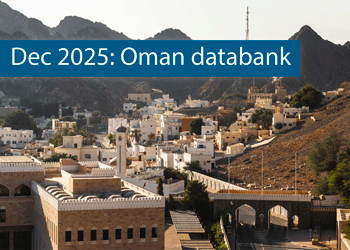 Oman’s growth forecast points upwards
Oman’s growth forecast points upwards24 December 2025
-
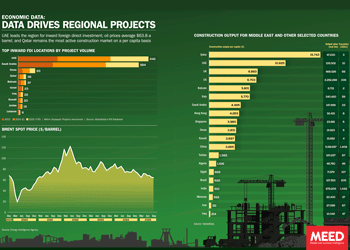 December 2025: Data drives regional projects
December 2025: Data drives regional projects23 December 2025
-
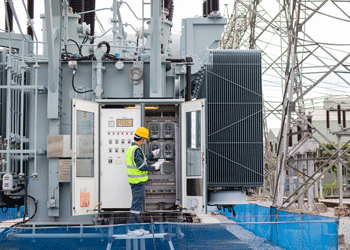 Local firm bids lowest for Kuwait substation deal
Local firm bids lowest for Kuwait substation deal22 December 2025
-
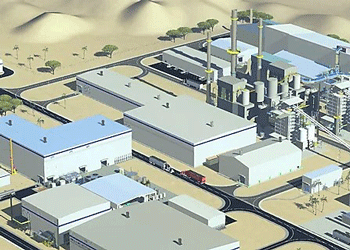 Saudi-Dutch JV awards ‘supercentre’ metals reclamation project
Saudi-Dutch JV awards ‘supercentre’ metals reclamation project22 December 2025
-
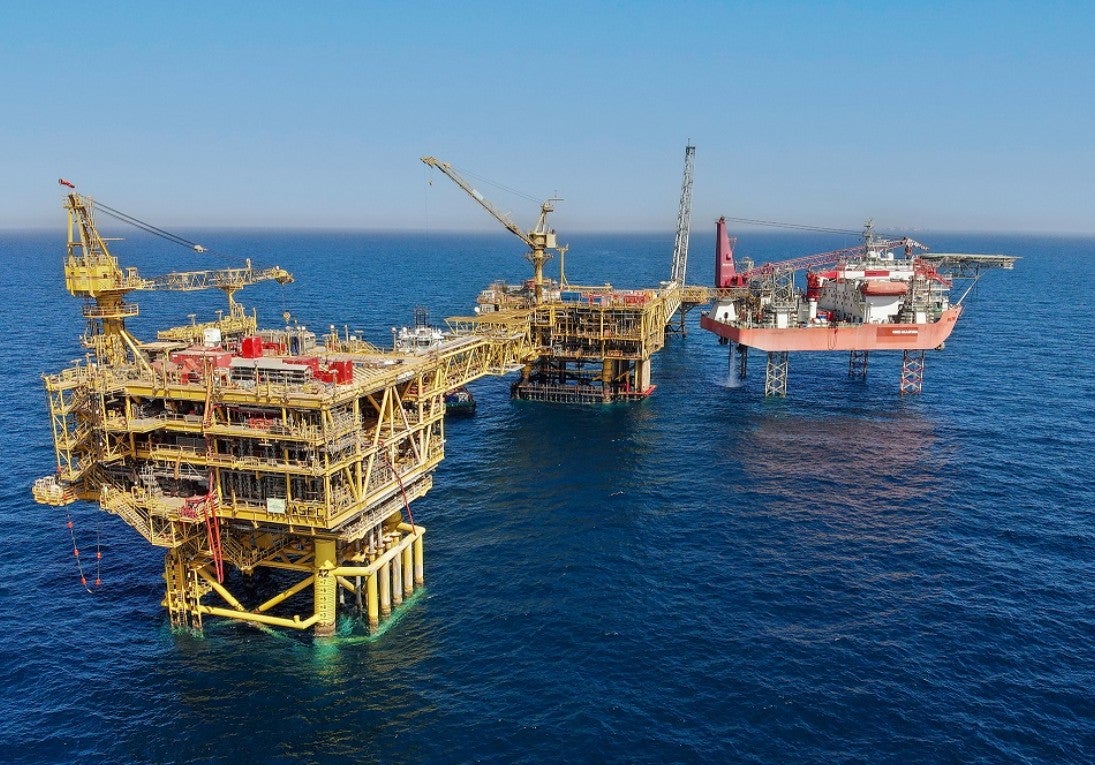 QatarEnergy LNG awards $4bn gas project package
QatarEnergy LNG awards $4bn gas project package22 December 2025
All of this is only 1% of what MEED.com has to offer
Subscribe now and unlock all the 153,671 articles on MEED.com
- All the latest news, data, and market intelligence across MENA at your fingerprints
- First-hand updates and inside information on projects, clients and competitors that matter to you
- 20 years' archive of information, data, and news for you to access at your convenience
- Strategize to succeed and minimise risks with timely analysis of current and future market trends

Related Articles
-
 Oman’s growth forecast points upwards
Oman’s growth forecast points upwards24 December 2025

MEED’s January 2026 report on Oman includes:
> COMMENT: Oman steadies growth with strategic restraint
> GVT & ECONOMY: Oman pursues diversification amid regional concerns
> BANKING: Oman banks feel impact of stronger economy
> OIL & GAS: LNG goals galvanise Oman’s oil and gas sector
> POWER & WATER: Oman prepares for a wave of IPP awards
> CONSTRUCTION: Momentum builds in construction sectorTo see previous issues of MEED Business Review, please click herehttps://image.digitalinsightresearch.in/uploads/NewsArticle/15306449/main.gif -
 December 2025: Data drives regional projects
December 2025: Data drives regional projects23 December 2025
Click here to download the PDF
Includes: Top inward FDI locations by project volume | Brent spot price | Construction output
MEED’s January 2026 report on Oman includes:
> COMMENT: Oman steadies growth with strategic restraint
> ECONOMY: Oman pursues diversification amid regional concerns
> BANKING: Oman banks feel impact of stronger economy
> OIL & GAS: LNG goals galvanise Oman’s oil and gas sector
> POWER & WATER: Oman prepares for a wave of IPP awards
> CONSTRUCTION: Momentum builds in construction sectorTo see previous issues of MEED Business Review, please click herehttps://image.digitalinsightresearch.in/uploads/NewsArticle/15306140/main.gif -
 Local firm bids lowest for Kuwait substation deal
Local firm bids lowest for Kuwait substation deal22 December 2025
The local Al-Ahleia Switchgear Company has submitted the lowest price of KD33.9m ($110.3m) for a contract to build a 400/132/11 kV substation at the South Surra township for Kuwait’s Public Authority for Housing Welfare (PAHW).
The bid was marginally lower than the two other offers of KD35.1m and KD35.5m submitted respectively by Saudi Arabia’s National Contracting Company (NCC) and India’s Larsen & Toubro.
PAHW is expected to take about three months to evaluate the prices before selecting the successful contractor.
The project is one of several transmission and distribution projects either out to bid or recently awarded by Kuwait’s main affordable housing client.
This year alone, it has awarded two contracts worth more than $100m for cable works at its 1Z, 2Z, 3Z and 4Z 400kV substations at Al-Istiqlal City, and two deals totalling just under $280m for the construction of seven 132/11kV substations in the same township.
Most recently, it has tendered two contracts to build seven 132/11kV main substations at its affordable housing project, west of Kuwait City. The bid deadline for the two deals covering the MS-01 through to MS-08 substations is 8 January.
https://image.digitalinsightresearch.in/uploads/NewsArticle/15305745/main.gif -
 Saudi-Dutch JV awards ‘supercentre’ metals reclamation project
Saudi-Dutch JV awards ‘supercentre’ metals reclamation project22 December 2025
The local Advanced Circular Materials Company (ACMC), a joint venture of the Netherlands-based Shell & AMG Recycling BV (SARBV) and local firm United Company for Industry (UCI), has awarded the engineering, procurement and construction (EPC) contract for the first phase of its $500m-plus metals reclamation complex in Jubail.
The contract, estimated to be worth in excess of $200m, was won by China TianChen Engineering Corporation (TCC), a subsidiary of China National Chemical Engineering Company (CNCEC), following the issue of the tender in July 2024.
Under the terms of the deal, TCC will process gasification ash generated at Saudi Aramco’s Jizan refining complex on the Red Sea coast to produce battery-grade vanadium oxide and vanadium electrolyte for vanadium redox flow batteries. AMG will provide the licensed technology required for the production process.
The works are the first of four planned phases at the catalyst and gasification ash recycling ‘Supercentre’, which is located at the PlasChem Park in Jubail Industrial City 2 alongside the Sadara integrated refining and petrochemical complex.
Phase 2 will expand the facility to process spent catalysts from heavy oil upgrading facilities to produce ferrovanadium for the steel industry and/or additional battery-grade vanadium oxide.
Phase 3 involves installing a manufacturing facility for residue-upgrading catalysts.
In the fourth phase, a vanadium electrolyte production plant will be developed.
The developers expect a total reduction of 3.6 million metric tonnes of carbon dioxide emissions a year when the four phases of the project are commissioned.
SARBV first announced its intention to build a metal reclamation and catalyst manufacturing facility in Saudi Arabia in November 2019. The kingdom’s Ministry of Investment, then known as the Saudi Arabian General Investment Authority (Sagia), supported the project.
In July 2022, SARBV and UCI signed the agreement to formalise their joint venture and build the proposed facility.
The project has received support from Saudi Aramco’s Namaat industrial investment programme. Aramco, at the time, also signed an agreement with the joint venture to offtake vanadium-bearing gasification ash from its Jizan refining complex.
Photo credit: SARBV
https://image.digitalinsightresearch.in/uploads/NewsArticle/15305326/main.gif -
 QatarEnergy LNG awards $4bn gas project package
QatarEnergy LNG awards $4bn gas project package22 December 2025
QatarEnergy LNG, a subsidiary of state-owned QatarEnergy, has awarded the main engineering, procurement, construction and installation (EPCI) contract for a major package for the second phase of its North Field Production Sustainability (NFPS) project.A consortium comprising the Italian contractor Saipem and state-owned China Offshore Oil Engineering Company (COOEC) has secured the EPCI contract for the COMP5 package. The contract value is $4bn, with Saipem declaring its share to be worth $3.1bn.
Milan-headquartered Saipem said the contract will run for about five years. The scope of work comprises engineering, procurement, fabrication and installation of two compression complexes, each including a compression platform, a living quarters platform, a flare platform supporting the gas combustion system, and the related interconnecting bridges. Each complex will have a total weight of about 68,000 tonnes.
Offshore installation operations will be carried out by Saipem’s De He construction vessel in 2029 and 2030.
MEED previously reported that the following contractors submitted bids for the NFPS phase two COMP5 package:
- Larsen & Toubro Energy Hydrocarbon (India)
- McDermott (US)
- Saipem/China Offshore Oil Engineering Company (Italy/China)
QatarEnergy LNG, formerly Qatargas, is said to have issued the tender for the NFPS phase two COMP5 package in the first quarter of the year.
Contractors submitted technical bids for the COMP5 package in late June, while commercial bids were submitted by 8 October, as per sources.
Based upon initial evaluation of bids by QatarEnergy LNG, L&TEH has emerged as the lowest bidder for the COMP5 package, followed by McDermott, with the consortium of Saipem and COOEC in third place, MEED reported in late October.
In the weeks following that, the project operator is said to have engaged all bidders for a final round of negotiations, during which the consortium of Saipem and COOEC is believed to have “clinched the deal”, according to sources.
The detailed scope of work on the COMP5 package covers the EPCI work on the following:
- Two gas compression platforms, each weighing 30,000-35,000 tonnes, plus jacket
- Two living quarters platforms, plus jacket
- Two gas flare platforms, plus jacket
- Brownfield modification work at two complexes
NFPS scheme
QatarEnergy’s North Field liquefied natural gas (LNG) expansion programme requires the state enterprise to pump large volumes of gas from the North Field offshore reserve to feed the three phases of the estimated $40bn-plus programme.
QatarEnergy has already invested billions of dollars in engineering, procurement and construction works on the two phases of the NFPS project, which aims to maintain steady gas feedstock for the North Field LNG expansion phases.
The second NFPS phase will mainly involve building gas compression facilities to sustain and gradually increase gas production from Qatar’s offshore North Field gas reserve over the long term.
Saipem has been the most successful contractor on the second NFPS phase, securing work worth a total of $8.5bn.
QatarEnergy LNG awarded Saipem a $4.5bn order in October 2022 to build and install gas compression facilities. The main scope of work on the package, which is known as EPCI 2, covers two large gas compression complexes that will comprise decks, jackets, topsides, interconnecting bridges, flare platforms, living quarters and interface modules.
The gas compression complexes – CP65 and CP75 – will weigh 62,000 tonnes and 63,000 tonnes, respectively, and will be the largest fixed steel jacket compression platforms ever built.
Following that, Saipem won combined packages COMP3A and COMP3B of the NFPS project’s second phase in September last year.
The scope of work on the combined packages encompasses the EPCI of a total of six platforms, approximately 100 kilometres (km) of corrosion resistance alloy rigid subsea pipelines of 28-inches and 24-inches diameter, 100km of subsea composite cables, 150km of fibre optic cables and several other subsea units.
Separately, QatarEnergy LNG awarded McDermott the contract for the NFPS second phase package known as EPCI 1, or COMP1, in July 2023. The scope of work on the estimated $1bn-plus contract is to install a subsea gas pipeline network at the North Field gas development.
In March this year, India’s Larsen & Toubro Energy Hydrocarbon (LTEH) won the main contract for the combined 4A and 4B package, which is the fourth package of the second phase of the NFPS project and is estimated to be valued at $4bn-$5bn.
The main scope of work on the package is the EPCI of two large gas compression systems that will be known as CP8S and CP4N, each weighing 25,000-35,000 tonnes. The contract scope also includes compression platforms, flare gas platforms and other associated structures.
LTHE sub-contracted detailed engineering and design works on the combined 4A and 4B package to French contractor Technip Energies.
NFPS first phase
Saipem is also executing the EPCI works on the entire first phase of the NFPS project, which consists of two main packages.
Through the first phase of the NFPS scheme, QatarEnergy LNG aims to increase the early gas field production capacity of the North Field offshore development to 110 million tonnes a year.
QatarEnergy LNG awarded Saipem the contract for the EPCI package in February 2021. The package is the larger of the two NFPS phase one packages and has a value of $1.7bn.
Saipem’s scope of work on the EPCI package encompasses building several offshore facilities for extracting and transporting natural gas, including platforms, supporting and connecting structures, subsea cables and anti-corrosion internally clad pipelines.
The scope of work also includes decommissioning a pipeline and other significant modifications to existing offshore facilities.
In addition, in April 2021, QatarEnergy LNG awarded Saipem two options for additional work within the EPCI package, worth about $350m.
QatarEnergy LNG awarded Saipem the second package of the NFPS phase one project, estimated to be worth $1bn, in March 2021.
Saipem’s scope of work on the package, which is known as EPCL, mainly covers installing three offshore export trunklines running almost 300km from their respective offshore platforms to the QatarEnergy LNG north and south plants located in Ras Laffan Industrial City.
Saipem performed the front-end engineering and design work on the main production package of the first phase of the NFPS as part of a $20m contract that it was awarded in January 2019. This provided a competitive advantage to the Italian contractor in its bid to win the package.
https://image.digitalinsightresearch.in/uploads/NewsArticle/15305330/main2239.jpg

